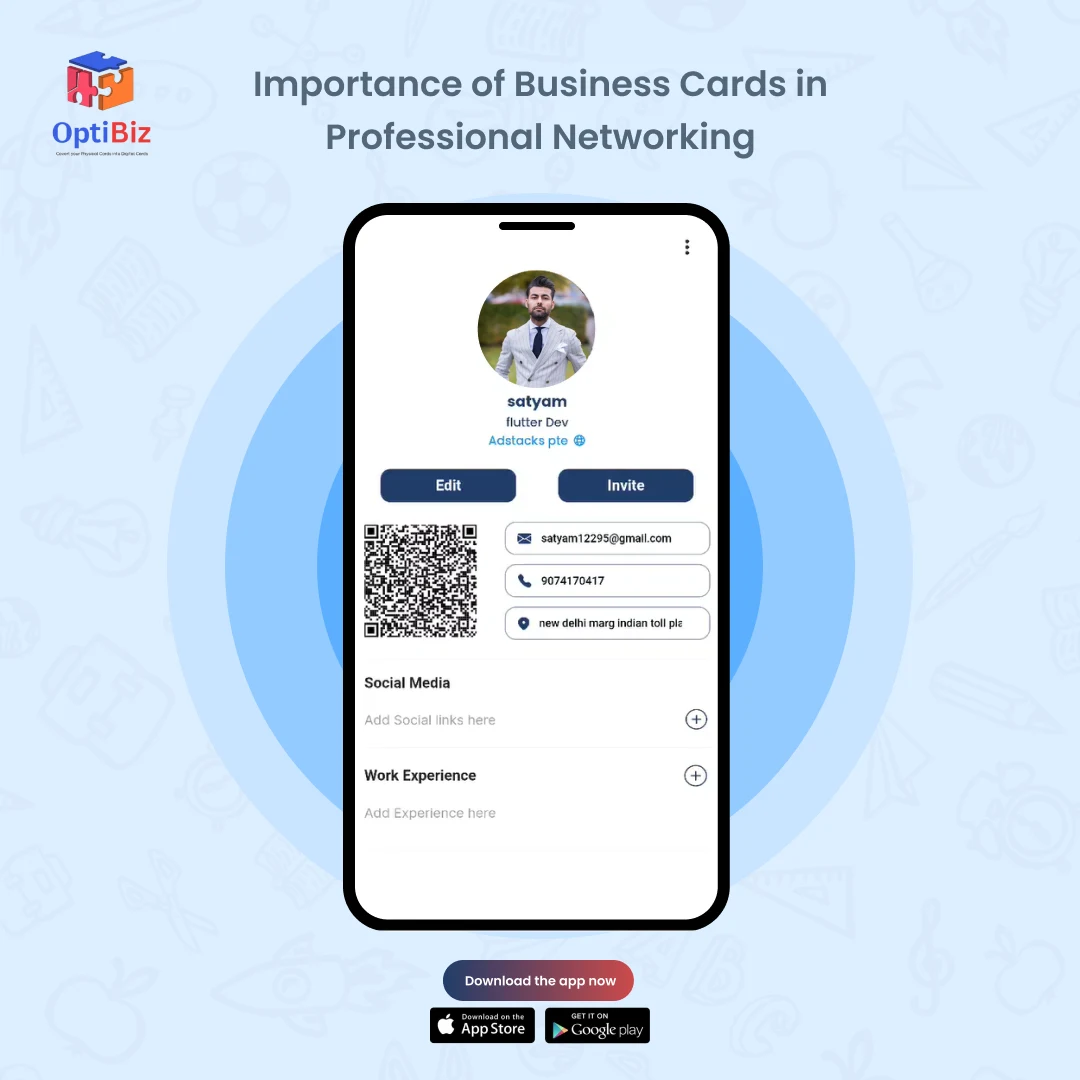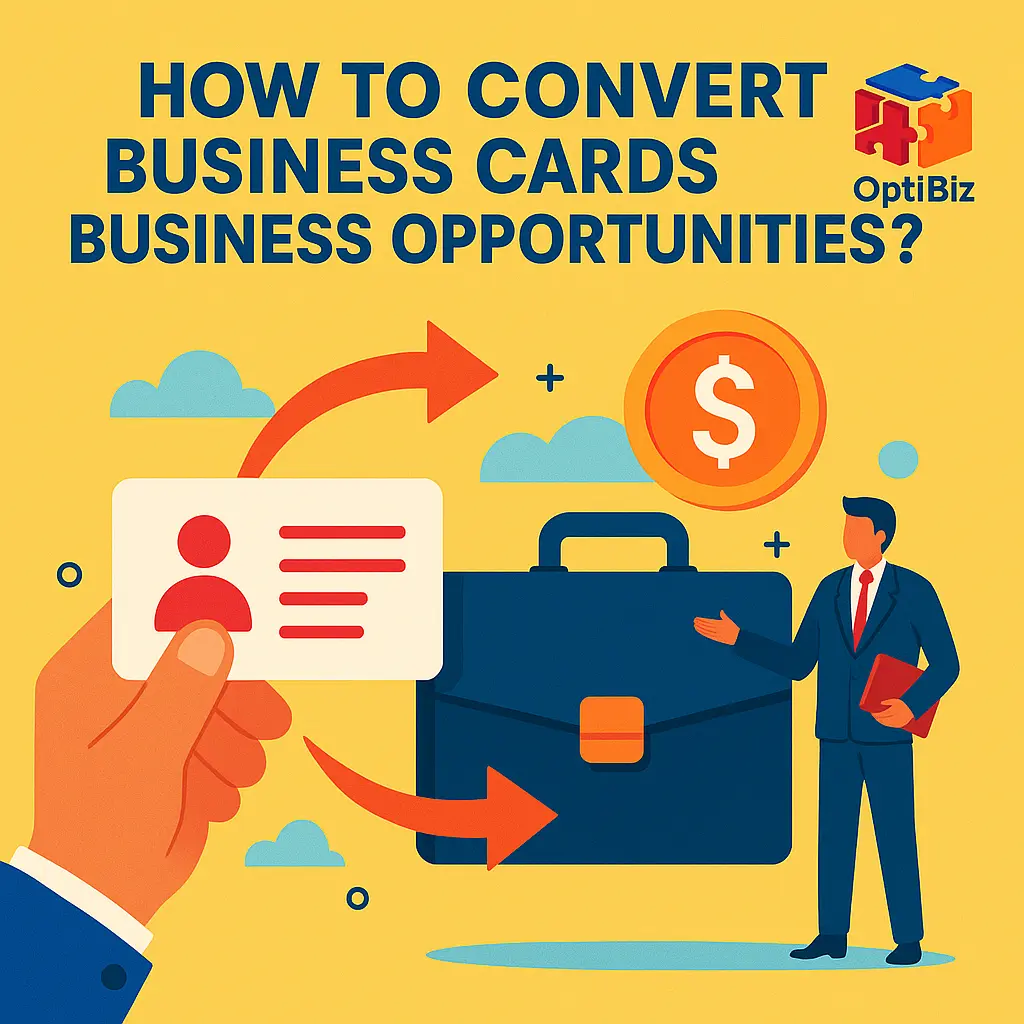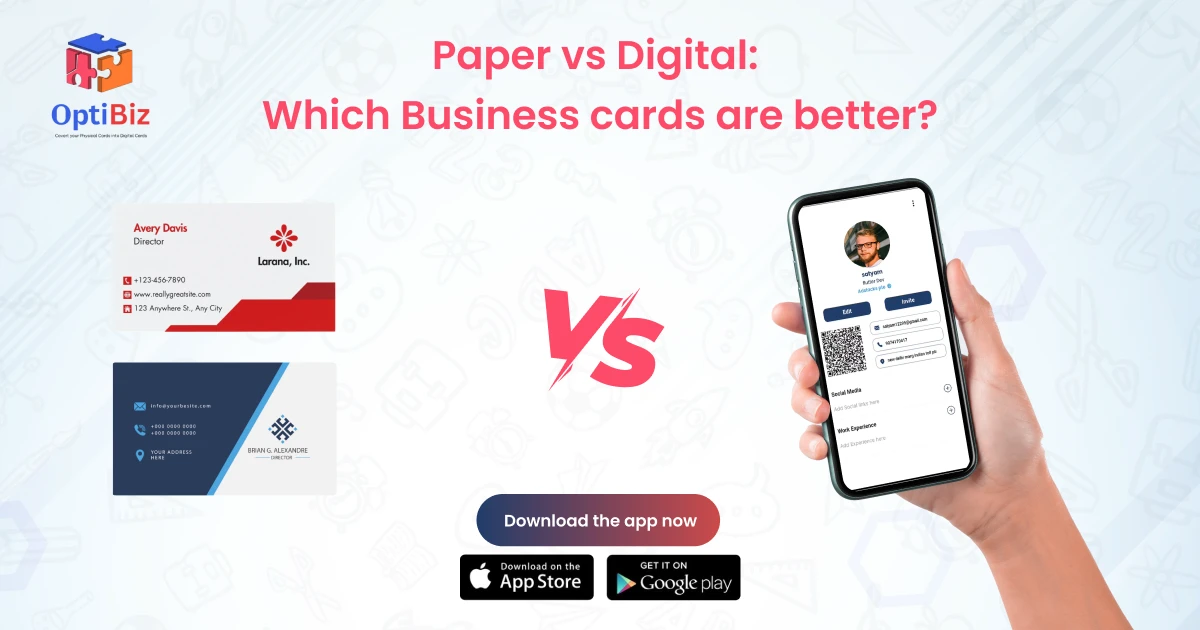
Table of Contents
When smartphones and LinkedIn connections are dominating the world, anyone might question whether business cards are still important. In reality, Business Cards in Professional Networking effective way to develop relationships. Giving someone a simple card could initiate a conversation, make an impression, and build trust. Why do people still use business cards? Let’s know their importance, the role they play, the impact they made, and the reasons they’re still worth it in today’s business world.
Importance of Business Cards in Professional Networking
Professional networking has always depended dramatically on business cards. When meeting someone new, they provide a quick and easy way to share contact details. If you’re attending a conference with a potential partner or client and want to keep in touch, you can simply give them your business card. This means that they will have your name, phone number, and email in their pocket so they can get in touch with you later. Research shows that 68% of small business owners still find business cards helpful for face-to-face networking.
A common initial step in developing a professional relationship is exchanging business cards. Having a few cards with yourself at meetings, conferences, and networking events shows that you’re serious about connecting with others. Business cards still matter because they make it easy for people to get in touch with you later. It is very helpful for anyone looking to expand their network in a professional way.
Making a Memorable Impact with Business Cards
A well-designed business card makes you unique and stand out in someone’s memory. Consider the number of cards people collect at a large networking event- the majority of them are forgotten or misplaced because they look alike. You want your card to look good right away in order to prevent this. It is much more likely to be saved if it is unique and well-designed; if not, it may become one of the 88% of business cards that are thrown away within a week. The way your card feels and looks could say a lot before you ever say a word. Adding colour, an attractive logo, or high-quality papers can all help you stand out.
An individual business card has the ability to make an impression that goes far more than the initial meeting. It acts as an actual reminder of your identity and the topics you covered. A unique design or memorable words might instantly recall the memories of your talk when someone sees your card in their workplace or wallet days later.
Basic Components of a Professional Business Card

An effective business card should clearly show your identity and contact details in a professional way. The key elements to include:
- Your Title and Name: To help people remember you and your work, add your job title or role and make sure your name is visible and easy to read.
- Company Name and Logo: Add the name and logo of your company or organization, to make your brand more strengthen.
- Contact Information: Add the easiest way to get in contact with you (phone number and email are common). You can also include your website or LinkedIn as well. Verify again that everything is correct.
- Clean, Simple Design: Keep a minimalistic layout. Use readable fonts and enough white space to avoid making anything appear congested. A simple design helps the important information stand out.
- High-quality Material: Use good quality papers for printing. Professionalism is shown by an effective, well-made card. Keep in mind that 72% of peoples base their opinion of a company on the overall quality of its card. When these components are included, your business card will show you in a professional manner and provide all the necessary information at one look.
Paper vs Digital Business Cards
Paper business cards and digital business cards app are the two ways for sharing your information. Physical cards are normal and you can tough it, hold it, and give it to someone in person. They don’t require any devices or apps and have a personal feel. But they can get lost, and you have to reprint them if your details changes.
Whereas, digital business cards are given virtually (as an example, by a QR code, email, or mobile app). Because there is no paper used, they are both environmentally friendly and very convenient- the client may save your information on their phone instantly. Digital cards are very simple to use and update.
Since many professionals use both methods, neither is superior. You could use a digital version for online relationships and a paper business card for in-person interactions. Despite the format, it is important to keep your contact information easy to access.
Business Cards in Professional Networking to build Credibility and Trust
Giving someone a business card shows your professionalism and availability. Since you are represented by an official card, it immediately gives validity. Giving a business card during a first meeting actually increases people’s trust in that person by almost 90%, according to one study.
Note: Credibility is also impacted by the quality of your card.
Tips for Using Business Cards Effectively in Networking
Having business cards isn’t enough – what matters is how you use them. To get the most out Business Cards in Professional Networking, here are some suggestions:
- Always keep Cards on you: Always carry a few business cards with you. Instead of apologizing because you ran out of cards, be ready to give them your business card because you never know when a networking opportunity will present itself.
- Choose the Correct Time: Avoid giving out your business card as soon as you meet someone. Finish your conversation first or when they ask for your information, then exchange cards. Giving it too soon can come across as disconnected, so timing is crucial.
- Present It Nicely: Make sure your card stands out and simple to see when you hand it to the other individual. Make sure your card is clean and straight. Show that you value the connection by taking a moment to look at and thank the person who handed you their card.
- Follow Up: Use the card to keep up after a networking event or meeting. Say “it was nice meeting you” in a brief through email or any social media contact. If someone gave you a card, save their information and think about getting in touch with them later. A simple introduction can develop into a long-term professional relationship.
The Future of Business Cards in a Digital Age
As time changes, so do business cards. Business cards are evolving with the time. We’re seeing smart business cards that use technology like NFC chips or QR codes, which allow someone to access your information on their phone with a simple tap or scan. Additionally, there are more apps for digital business cards that allow you to share contact information via email, QR, or etc.
One of the best application for Business Cards in Professional Networking is OptiBiz.
1.Infinite Scans
There are no restrictions on how many business cards you can scan and save with OptiBiz Premium. Excellent for collecting contacts at networking events, conferences, and meetings.
2.Create Your Own Team
Whether you are in a big organization or a startup, it is easy to add and arrange team members, which makes communication and teamwork easier.
3.Create Meetings
To maintain projects on schedule and maintain relationships with clients, partners, and team members, schedule meetings as per your need.
4.In-built chat to your Connections
With the help of OptiBiz Premium’s integrated chat function, you can communicate and work together with your network anytime, all in the same app. Additional messaging apps are not required to connect.
In the digital world, are business cards still useful?
Yes, of course. Exchanging a physical paper card is a fast and professional way to share contact details, even in this age of smartphones. Although digital methods are becoming more popular, but business cards are still widely in use for face-to-face connections.
What details must to be added on my business card?
Include your name, work title, and your main contact details (usually a phone number and email). Add name or logo of your company or business if you have one. A website or LinkedIn URL can also be added. Keep only the important information someone wants to get in touch with you.
Best time to give my business card to someone?
Usually when someone ask for it or at the end of a conversation. After introducing yourself and having a chat, offer your card.
Should I use digital business cards instead of paper cards?
Having both is a good idea. While digital cards are convenient for online networking and simple to have it in your phone, Paper cards are great for face-to-face meetings. Having both options, allows you to connect effortlessly no matter how someone prefers to exchange information.


